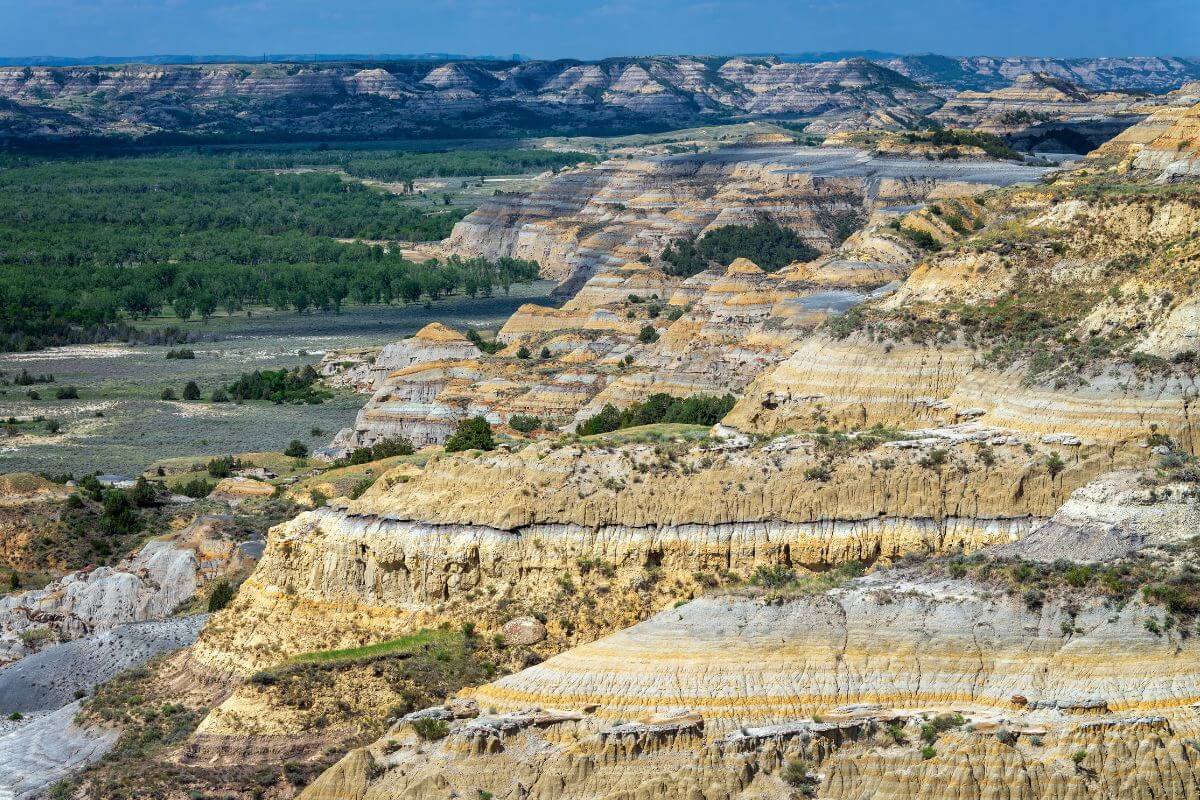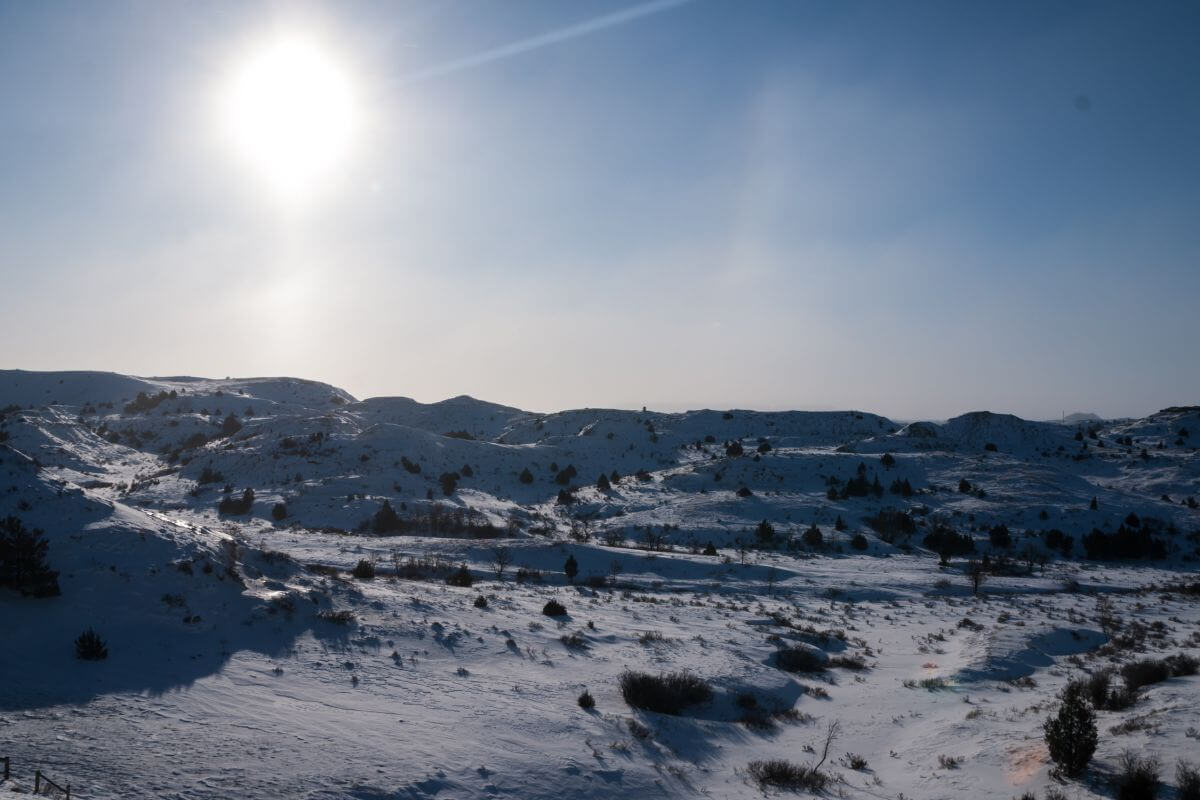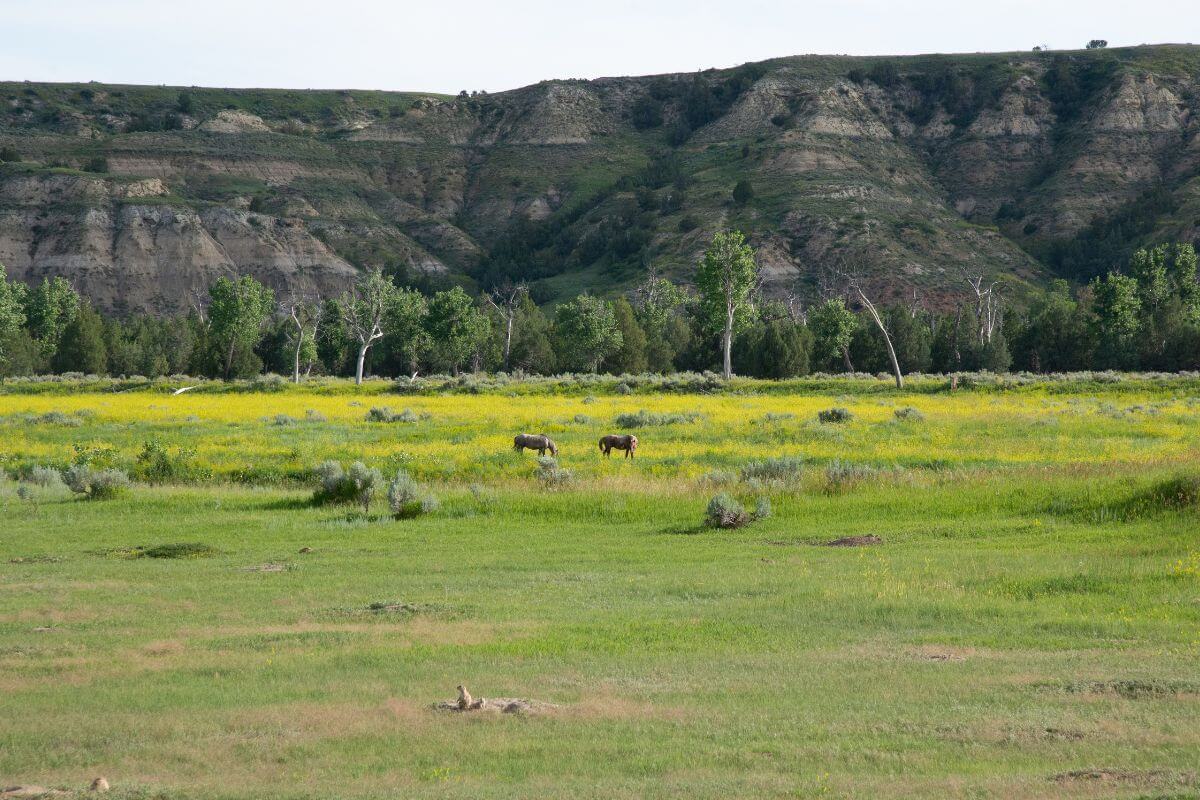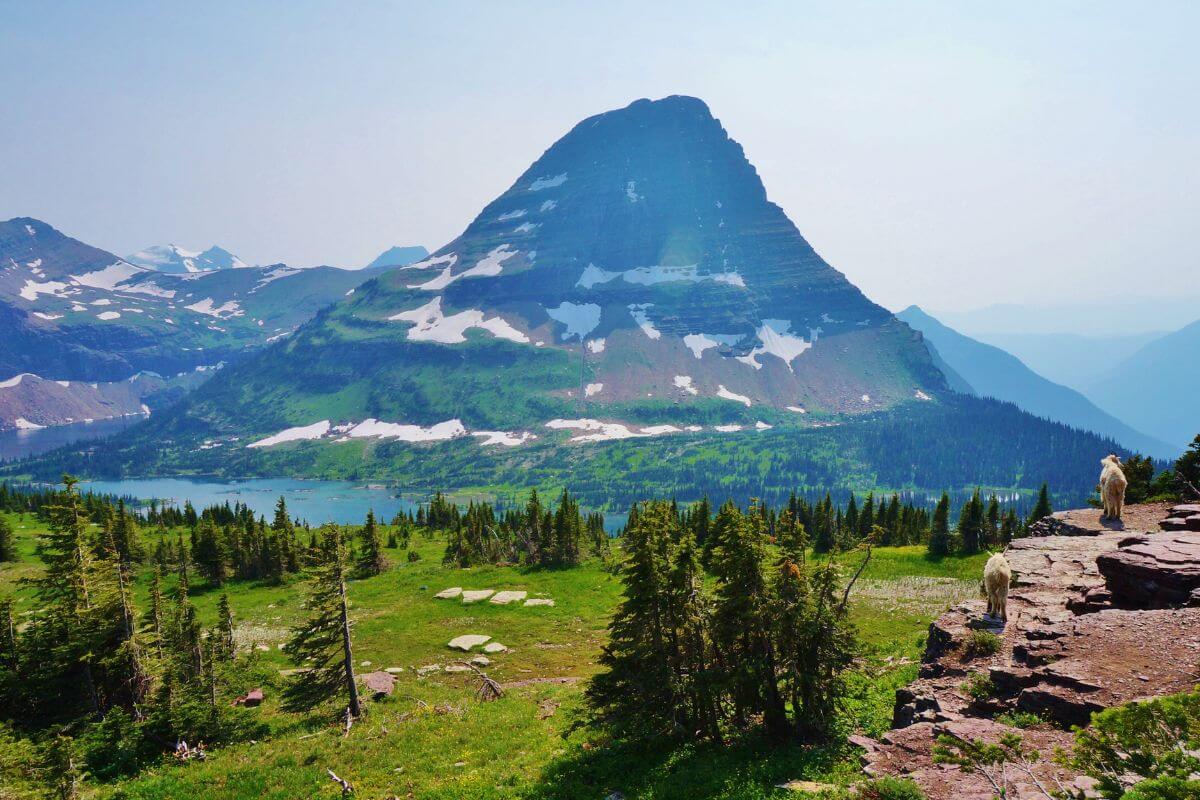Hey there, fellow travelers! Are you ready to embark on a journey through two mesmerizing states? Montana and North Dakota, each with its own charm, hold the promise of unforgettable experiences.
This article is for you, the intrepid explorer seeking the perfect destination. Whether you love untouched wilderness or crave a glimpse into the past, I’ve got you covered.
So, buckle up and prepare to be whisked away on an epic journey through Montana and North Dakota. Together, we’ll forge a rapport as we delve into the heart and soul of each state.
I’ll regale you with enchanting tales, introduce you to hidden gems, and paint vivid pictures with words that will transport you to the heartland of America.
So, are you ready to join me on this exhilarating adventure? Montana (MT) or North Dakota (ND)? The choice is yours, and I’m here to help you make the most unforgettable memories.
Let’s dive into the landscape, culture, and spirit of these captivating states – it’s going to be an extraordinary ride!
Montana vs North Dakota: Why Are They Being Compared and Which Is Better?

As I dive into the enchanting landscapes of Montana and North Dakota, a question beckons: why are these two captivating states being compared?
Though they may be neighbors, Montana and North Dakota have their own unique charm that sets them apart. So, which one is better, you ask? That’s a tough question, for beauty lies in the eye of the beholder.
Montana boasts majestic mountains and untamed wilderness, while North Dakota offers a glimpse into the vibrant cultural heritage and a taste of the wild frontier.
Montana vs North Dakota: Size and Population

Montana and North Dakota, two states in the northern region of the United States, differ in both size and population.
Montana claims the title of the 4th largest state in the US, while North Dakota ranks as the 19th largest state in the US.
This table provides a comparison between Montana and North Dakota, highlighting their respective sizes, and population estimates.
| MT | ND | |
| Area in square miles | 147,040 | 70,705 |
| Population (est. July 2022) | 1,122,867 | 779,261 |
Montana vs North Dakota: Lifestyle and Cost of Living

When it comes to lifestyle and cost of living, Montana and North Dakota offer distinct experiences.
1. Living Arrangement, Age, and Sex – North Dakota has a higher percentage of persons under 18 years old, while Montana has a higher percentage of persons 65 years and over, female, and persons per household.
| Living arrangement, age, and sex | MT | ND |
Percent of population aged under 18 years old | 21.30% | 24.00% |
Percent of population age 65 years and over | 19.60% | 16.10% |
| Percentage of Female persons | 49.3% | 48.6% |
| Persons per household | 2.41 | 2.37 |
2. Housing – Montana generally has higher median values for owner-occupied housing units and gross rent than North Dakota.
| Housing | MT | ND |
| Median value of owner-occupied housing | $263,700 | $209,900 |
| Median gross rent | $886 | $853 |
| Monthly owner costs with a mortgage | $1,538 | $1,524 |
| Monthly owner costs without a mortgage | $476 | $506 |
| Owner-occupied housing unit rate | 69.10% | 63.00% |
3. Education – Montana has a higher percentage of the population of Bachelor’s and high school graduates than North Dakota
| Education | MT | ND |
| Bachelor’s degree or higher | 33.70% | 31.10% |
| High school graduate or higher | 94.40% | 93.30% |
4. Economy – Montana has lower total retail sales per capita than North Dakota.
| Economy | MT | ND |
| Total retail sales | $16,070 | $25,439 |
5. Healthcare – Montana has a slightly higher percentage of persons without insurance under the age of 65.
| Healthcare | MT | ND |
| Persons without health insurance under 65 years old | 10.10% | 9.20% |
6. Labor Force – North Dakota has a higher percentage of its population workers ages 16+ and above in the civilian labor force compared to Montana.
| Labor Force | MT | ND |
| Workers 16 years and over in the labor force | 62.90% | 68.50% |
7. Transportation – The mean travel time to work is slightly higher in Montana compared to North Dakota.
| Transportation | MT | ND |
| Mean travel time to work (minutes) | 18.6 | 17.6 |
8. Poverty – Both Montana and North Dakota have relatively low percentages of persons in poverty.
| Poverty | MT | ND |
| Persons in poverty | 11.90% | 11.10% |
9. Income – North Dakota has a higher median household income and a higher per capita income.
| Income | MT | ND |
| Median household income (in 2021 dollars) | $60,560 | $68,131 |
| Per capita income (in 2021 dollars) | $34,423 | $37,343 |
10. Computer and Internet Use– North Dakota has more households with computers, however, When it comes to broadband Internet subscriptions, Montana had a slightly higher percentage.
| Computer and Internet Use | MT | ND |
| Households with a computer | 91.80% | 92.20% |
| Households with broadband | 85.20% | 84.20% |
Montana vs North Dakota: Weather and Terrain

When it comes to weather conditions and terrain, both Montana and North Dakota offer unique landscapes that cater to different interests and lifestyles.
Montana is known for its vast expanses of open plains, rolling hills, and majestic mountains like the Rocky Mountains and the Bitterroot Range.
North Dakota’s landscape shifts from the Drift Prairie region’s rolling hills, valleys, lakes, and wetlands to the elevated Missouri Plateau in the west, including badlands in Theodore Roosevelt National Park.
The two states experience distinct seasons with varying temperatures. Here’s a description of the seasonal weather in both states:
1. Summer – Summer brings warm temperatures, occasional thunderstorms, and opportunities to enjoy outdoor activities in their beautiful landscapes.
- In Montana, summers are dry and sunny days, with occasional clouds, and gentle rain showers with temperatures between 75-90°F, with the possibility of heat waves reaching the low 100s °F.
- Thunderstorms may occur, especially in eastern Montana, where dry thunderstorms pose a wildfire risk.
- North Dakota experiences warm to hot days with average temperatures around 82°F.
- The days are sunny, and North Dakota enjoys long daylight hours, with the sun rising before 6 a.m. and setting after 9:30 p.m. The nights are cool and provide a comfortable sleeping environment.
2. Autumn – Autumn offers a mix of Indian summer days, cooler temperatures, and the colorful transformation of foliage, creating a picturesque season for outdoor enthusiasts and nature lovers.
- Autumn weather in Montana begins in late September and extends into November. It can be quite variable, with weeks of Indian summer followed by cold rain and sporadic snow showers.
- Autumn in North Dakota is characterized by pleasantly warm days and cool nights. As the season progresses, the temperature starts to decrease.
- In September, the average temperature in North Dakota is around 66°F. The first frost usually occurs around mid-September, signaling the end of the summer season.
3. Winter – Winter brings cold temperatures, occasional snowfall, and diverse weather patterns that vary across the states.
- Eastern Montana tends to experience colder weather than the western part, as the first cold air of the season moves in from Canada. Winter weather in Montana showcases extreme variations across the state.
- Areas east of the Continental Divide can endure below-zero temperatures, while western cities like Missoula and Kalispell enjoy relatively milder conditions, with temperatures often 50°F higher.
- Western Montana receives more snowfall compared to the eastern region, and strong winds and blowing snow are common in the east.
- Winter in North Dakota brings cold temperatures and snowy conditions. The average temperature during this season is around 24°F.
- North Dakota experiences snowfall and winter activities are popular. It’s important to bundle up and be prepared for colder temperatures.
4. Spring – Spring ushers in changing weather, with a mix of snow showers, rain, and gradual warming, offering a diverse transition from the winter season.
- Spring in Montana brings both delight and unpredictability. Snowfall may continue throughout the season, gradually lessening. Rain becomes prevalent in May and June, preventing forest fires and providing moisture for the valleys.
- Western Montana warms up slowly, experiencing cloudy days, cool air, and light spring showers. In contrast, eastern Montana warms up faster, occasionally experiencing scorching weather.
- Spring in North Dakota is a time of transition and rapid change. The season starts with melting snow and gradually sees the emergence of vibrant greenery and blooming flowers.
- The average temperature in North Dakota spring is around 52°F. The weather can be variable, with some days being cooler while others are warmer as the season progresses.
Montana vs North Dakota: Natural Resources and Wildlife

Montana’s natural beauty, which encompasses impressive landscapes and breathtaking national parks, is an outdoor lover’s dream. Glacier National Park and Flathead National Forest are just a couple of the natural wonders in the state.
If you’re a fan of stunning lakes, then Flathead Lake should be on your must-visit list. And if you’re up for a scenic drive, the Beartooth Highway will take your breath away.
And speaking of wildlife, Montana is home to an abundance of it. From the majestic grizzly bears to the elusive mountain lions, the state’s diverse habitats support a wide range of animal species.
On the other hand, North Dakota may not boast the same national parks as Montana, but it still has its fair share of natural wonders.
Theodore Roosevelt National Park and the Badlands of North Dakota showcase the state’s rugged beauty, while Pembina Gorge and Lake Sakakawea offer outdoor activities such as hiking, fishing, and boating.
The Sheyenne National Grassland is another gem, with its rolling prairies and unique plant and animal life.
When it comes to natural resources, both states have their own unique industries and economic contributions. Montana is known for its rich mineral resources, including copper, gold, and silver.
North Dakota, on the other hand, is a major player in the oil and gas industry, thanks to its vast oil reserves in the Bakken Formation.
Montana vs North Dakota: Job Opportunities

Montana has taken a step towards supporting workers by revising its minimum wage to $9.95 per hour starting from January 1, 2023. This increase applies to all workers, except tipped workers, and has gone up from $9.20 per hour.
On the other hand, in North Dakota, the state minimum wage rate is $7.25 per hour, which is the same as the current Federal Minimum Wage rate.
In terms of unemployment rates, Montana boasts an impressive record, with its unemployment rate remaining at an all-time low of 2.3% in May.
This shows that the state has a strong job market and ample opportunities for those seeking employment. North Dakota, while slightly higher, still maintains a respectable unemployment rate of 3.5%.
Both states have major industries that contribute to their economies. In Montana, the major industries include agriculture, mining, tourism, and healthcare.
Montana’s agricultural industry offers opportunities in farming, ranching, and agribusiness. The mining industry, with its rich mineral resources, provides jobs in copper, gold, and silver mining.
The tourism and healthcare sectors also offer employment opportunities, especially in areas such as hospitality, recreation, and healthcare services.
Similarly, North Dakota has its own set of major industries, including oil and gas production, agriculture, manufacturing, and healthcare.
North Dakota’s vast oil reserves in the Bakken Formation have contributed to the growth of the oil and gas industry, offering jobs in exploration, drilling, and production.
Agriculture remains a significant industry, with opportunities in crop farming and livestock production.
The manufacturing sector, particularly in machinery and equipment manufacturing, provides employment opportunities, as does the healthcare sector, with a demand for healthcare professionals and support staff.
Montana vs North Dakota Final Thoughts

After comparing the key factors of Montana and North Dakota, it’s clear that these neighboring states share some similarities but also boast distinct differences.
In terms of size, MT takes the lead as the 4th largest state in the nation, offering vast landscapes that include majestic mountains and open plains.
MT has a larger population compared to ND’s population. However, MT has a lower population density, which may be appealing to those seeking a quieter and less crowded environment.
When it comes to lifestyle and cost of living, both states have their own advantages. MT has a higher percentage of persons aged 65 and over, indicating a potentially more retiree-friendly environment.
MT boasts higher median values for owner-occupied housing units and gross rent. While, ND has a higher percentage of persons under 18 years old, indicating a more family-friendly environment.
Both states have impressive job markets, with Montana maintaining an all-time low unemployment rate of 2.3% and North Dakota not far behind at 3.5%.
Ultimately, the question of which state is better, MT or ND depends on individual preferences and priorities.
MT’s larger population compared to ND, diverse industries, and natural beauty may appeal to those seeking a more vibrant and adventurous lifestyle.
On the other hand, ND’s family-friendly environment, strong job market, and oil industry may be attractive to those looking for stability and career opportunities.
Whether one prefers the rugged mountains and abundant wildlife of Montana or the rolling hills, oil industry, and the family-oriented atmosphere of North Dakota, both states offer unique experiences and opportunities for those looking to call them home.
Montana vs North Dakota FAQs
1. Which State Is Better: Montana or North Dakota?
Choosing between MT and ND is subjective and depends on individual preferences.
MT offers stunning natural beauty with its mountains, national parks, and abundant wildlife, while ND has attractions like national parks and a more urban lifestyle.
Factors such as climate, population, economic opportunities, and cost of living should be considered to make an informed decision.
2. What Is North Dakota Known For?
ND is known for its Badlands region, which features rugged terrain, canyons, and unique rock formations.
The state is also famous for Theodore Roosevelt National Park, named after the 26th President of the United States who spent time in the area.
The park offers scenic vistas, wildlife viewing opportunities, and a chance to explore the landscapes that inspired Roosevelt’s conservation efforts.
3. Is It Cheaper to Live in North Dakota or Montana?
ND appears to be cheaper to live in compared to MT due to its lower tax rates, lower workers’ compensation costs, and potentially lower overall cost of goods and services.
However, other factors such as housing costs and healthcare expenses should be considered to get a more complete picture of the cost of living in each state.
4. What Language Do They Speak in North Dakota?
English is spoken by 93.83% of people in ND. Other languages spoken include German, Spanish, French, Norwegian, Dakota, Hindi, Afrikaans, Bengali, Navajo, and other specified North American Indian languages.
5. Why Was Dakota Split Into Two States?
Dakota Territory was split into North and South Dakota due to political reasons and the desire for self-governance.
The move was driven by the people’s inability to vote for their leaders and elect members of Congress, along with the relocation of the capital from the southern half to the north and central part of the territory.
With the support of President Benjamin Harrison, the Omnibus Statehood Bill was passed in 1889, leading to the creation of both states.
If you’re interested in diving deeper into Montana, stay involved with these articles:
- https://www.nps.gov/thro/learn/kidsyouth/whatarebadlands.htm
- https://gf.nd.gov/wildlife/habitats/regions
- https://www.usgs.gov/educational-resources/highest-and-lowest-elevations
- https://www.umt.edu/this-is-montana/columns/stories/montana-weather-13.php
- https://gf.nd.gov/wildlife/habitats/climate
- https://www.ahrq.gov/research/findings/final-reports/iomracereport/reldata4fig4-3ad.html
- https://sd4history.sd.gov/Unit8/sdgovlesson2.htm
- https://www.census.gov/quickfacts/ND
- https://www.eia.gov/state/analysis.php?sid=MT
- https://www.census.gov/quickfacts/MT
- https://www.census.gov/quickfacts/ND
- https://fieldguide.mt.gov/default.aspx
- https://erd.dli.mt.gov/labor-standards/wage-and-hour-payment-act/state-minimum-wage
- https://www.bls.gov/eag/eag.nd.htm
- https://news.mt.gov/Governors-Office/Montana_Unemployment_Remains_at_All-Time_Low

